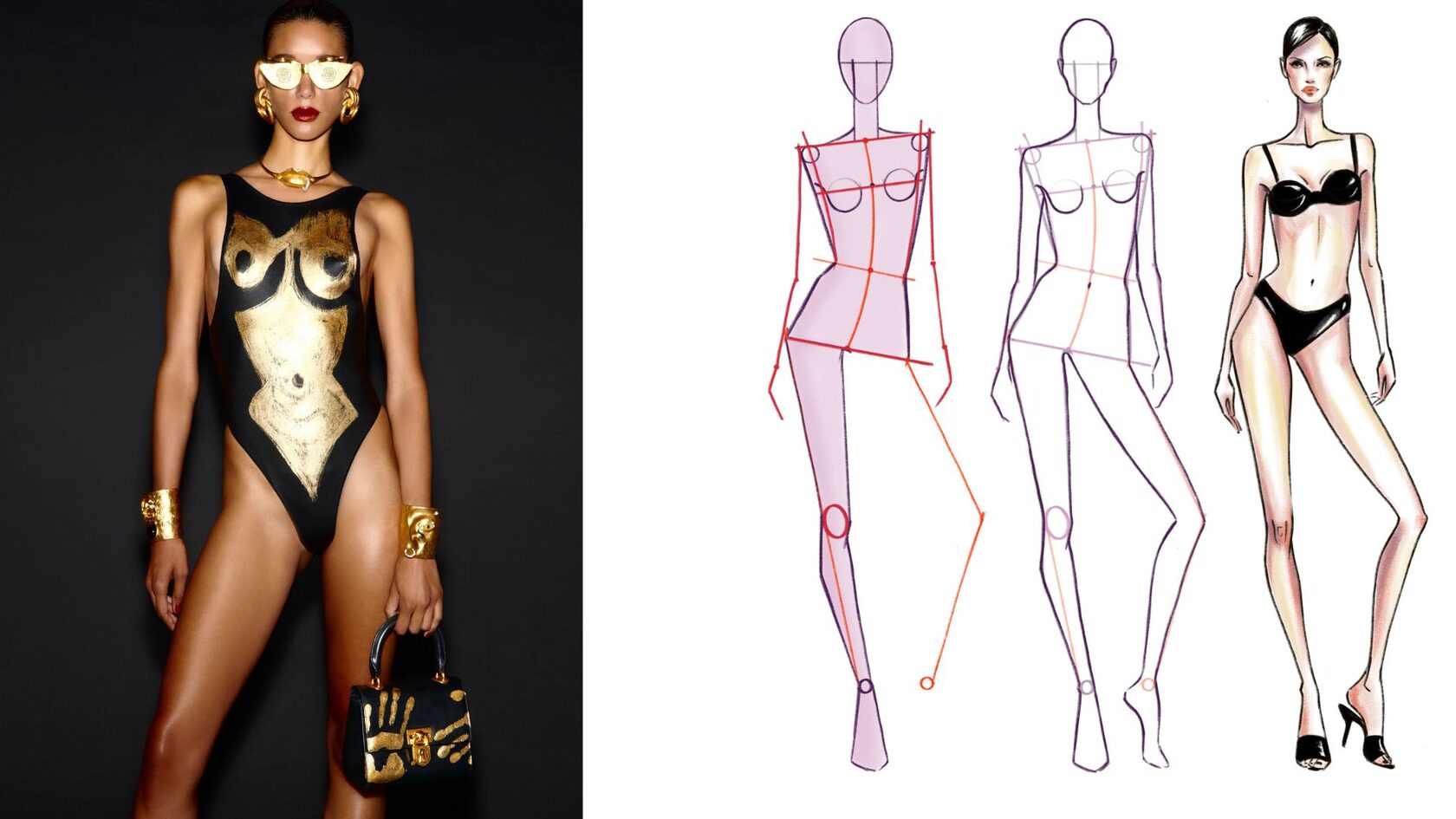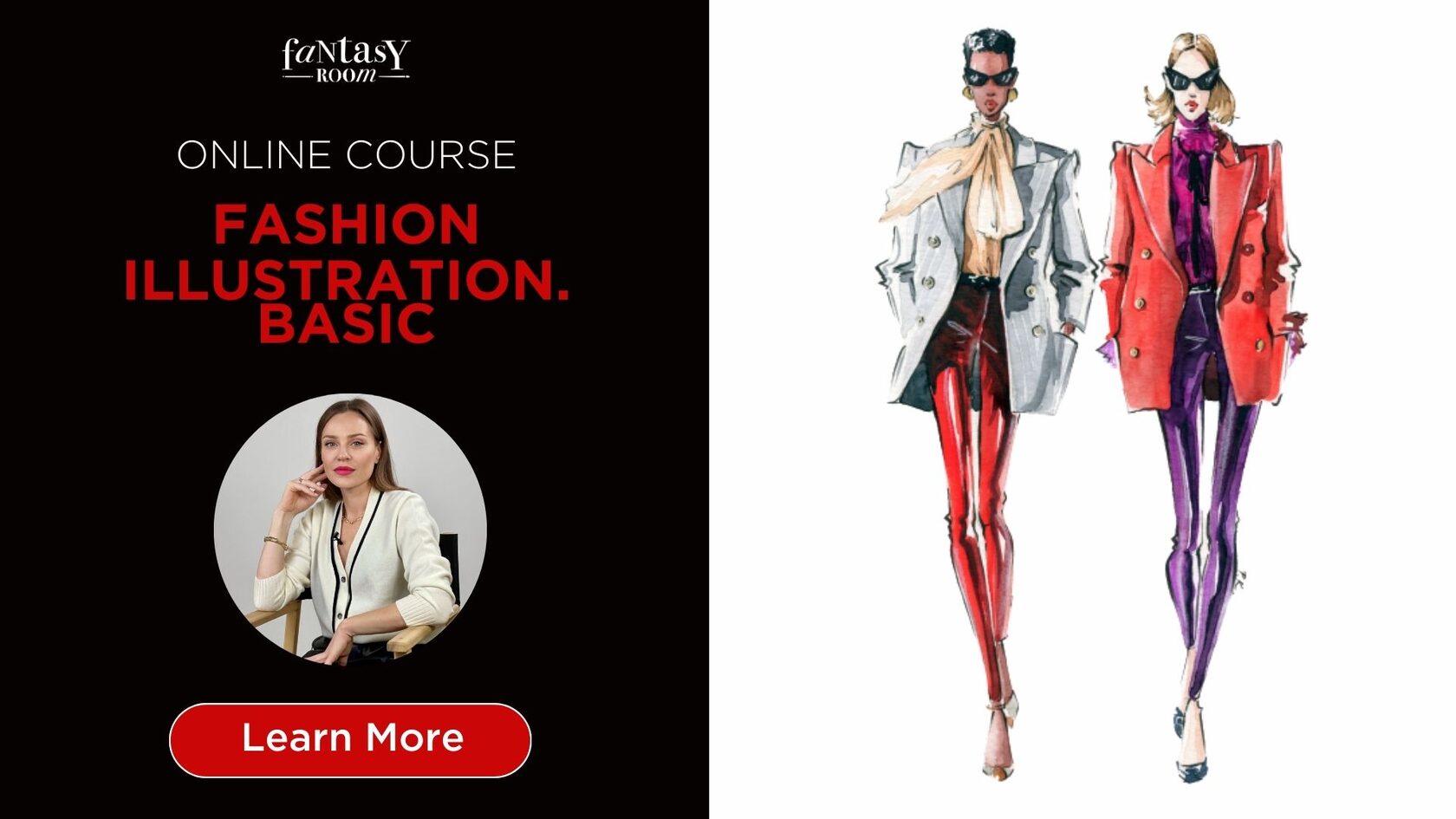In the vibrant world of fashion illustration, mastering the art of capturing dynamic poses is essential for bringing designs to life on the page. Whether you're sketching haute couture or streetwear, the poses you choose can convey mood, movement, and attitude, elevating your fashion drawings from static sketches to captivating artworks. Join us as we delve into the realm of poses for fashion drawings, exploring techniques to infuse your illustrations with flair and personality.

Not all poses observed on real-life models seamlessly transition onto paper, highlighting the importance of discerning various poses and their compatibility with different types of attire. A fashion model clad in an evening gown exudes elegance with upright posture, showcasing the gown's intricate details, while a casual teen's urban ensemble calls for a relaxed, slouched stance to emphasize the clothing's easy movement.
In fashion illustration, artists commonly employ four distinct pose views:
In fashion illustration, artists commonly employ four distinct pose views:
- Back view
- Front view
- Three-quarter view
- Side view
Figure leaning on one leg. Dynamics

Leaning on one leg is a dynamic pose commonly utilized in fashion illustration, renowned for its versatility and widespread adoption in runway shows. This pose exudes a sense of fluidity and movement, capturing the attention of viewers with its graceful silhouette. At runway events, models frequently showcase garments while leaning on one leg, allowing the fabric to drape elegantly and emphasizing the garment's design elements. As a result, this pose has become an iconic representation of the fashion industry's glamour and sophistication, making it a staple choice for fashion illustrators seeking to convey style and allure in their artwork.
Figure en face on two legs

The figure en face, standing squarely on two legs, is a commonly used pose in fashion illustration for its simplicity and practicality. This straightforward stance serves as a foundational template for sketching garments before they are created, providing a clear and easily understandable canvas for designers to conceptualize their creations. Its widespread use stems from its ease of drawing, making it accessible for artists of all skill levels to quickly outline and visualize clothing designs with accuracy. By employing this pose, fashion illustrators can focus on showcasing the intricate details and features of their designs, laying the groundwork for the realization of stunning fashion pieces.

In our Fashion Illustration course, you'll master the art of drawing all types of poses using a blend of traditional and digital techniques. From dynamic movements to static poses, you'll learn to bring your fashion sketches to life using mixed media such as watercolor and markers. Additionally, you'll delve into the world of digital illustration with Procreate, exploring advanced techniques to enhance your designs. Join us and elevate your fashion illustration skills to new heights!
Figure in 3⁄4 pose

The figure in a 3/4 pose presents a more challenging stance in fashion illustration, requiring beginners to approach it with careful attention to detail. This pose, while visually dynamic and engaging, introduces complexities in capturing proportions, angles, and foreshortening. As such, novice illustrators must pay close attention to anatomical nuances and perspective to accurately depict the figure's pose and convey the intended aesthetic of the design. While mastering the 3/4 pose may present initial difficulties, diligent practice and a keen eye for observation will ultimately empower aspiring artists to confidently navigate and excel in portraying this captivating pose in their fashion illustrations.
The figure in profile

The figure in profile, while not as commonly depicted in fashion illustration as other poses, serves a specific purpose, often employed in sketches from runway shows. This pose offers a side-on view of the model, allowing designers to showcase the silhouette and proportions of the garment with clarity and precision. While less frequently used in fashion illustrations intended for artistic expression, the profile pose is favored in the context of runway sketches for its ability to highlight the structural elements and flow of the clothing, providing valuable insights for designers and garment construction teams.
Let's summarize
In conclusion, mastering the art of fashion drawing requires a nuanced understanding of both dynamic and static poses. By learning to effectively utilize these poses, artists can infuse their illustrations with movement, energy, and personality, elevating their creations to new heights. Whether capturing the fluidity of fabric in motion or the sleek lines of a static pose, the ability to strike a pose with confidence and creativity is essential for conveying the essence of fashion design. With practice and dedication, aspiring fashion illustrators can unlock their artistic potential and create captivating artworks that resonate with viewers worldwide. So, strike a pose and embark on your journey to mastering the captivating world of fashion drawing.











